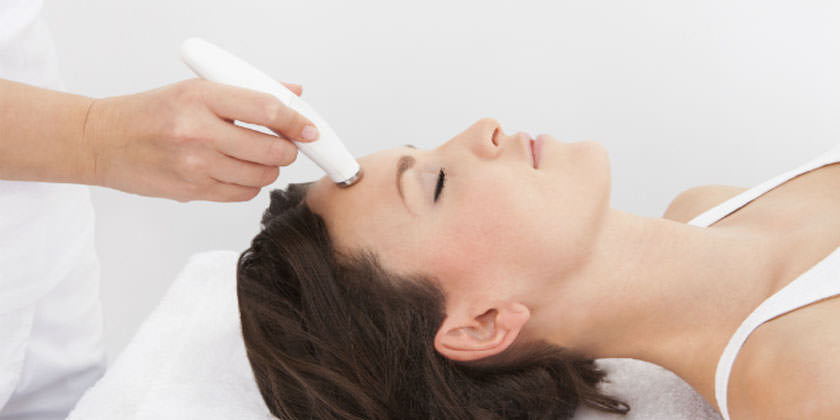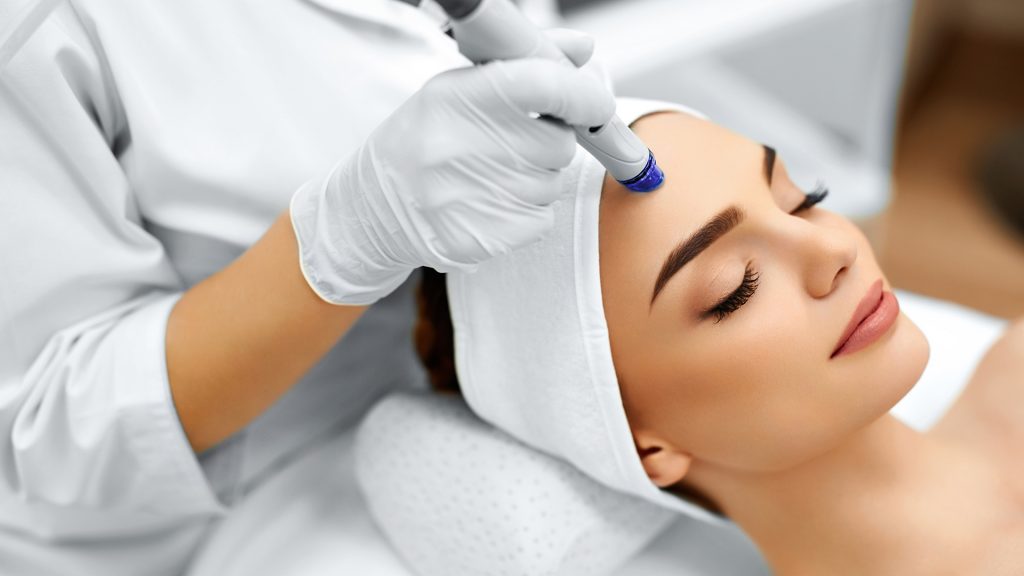In the quest for firm, radiant, and wrinkle-free skin, more and more people are turning to radiofrequency treatments as a safe, effective, and non-surgical alternative to combat the signs of aging.
At Dra. Brianda’s Clinic in Málaga and Marbella, this type of treatment has become one of the most in-demand options thanks to its ability to stimulate the natural production of collagen and elastin, achieving progressive and long-lasting rejuvenation without altering facial expressions.
In this article, we explain what radiofrequency treatments are, how they work, the different types available, their benefits, and we answer the most common questions from our patients.
What Are Radiofrequency Treatments?
Radiofrequency treatments are non-invasive aesthetic procedures that use electromagnetic waves to heat the deeper layers of the skin. This controlled heat stimulates the production of collagen and elastin—two essential proteins for keeping the skin firm, smooth, and youthful.
Unlike other treatments, radiofrequency does not damage the surface of the skin, so downtime is minimal, and the results appear gradually and naturally.
Why Does the Skin Age and How Does Radiofrequency Help?
From the age of 20, our bodies begin to reduce collagen and elastin production, which leads to a loss of firmness, the appearance of wrinkles, and sagging skin. Factors such as sun exposure, stress, smoking, and poor nutrition accelerate this process.
Radiofrequency tackles this problem directly by reactivating the skin’s natural regeneration process. With each session, the skin’s structure becomes stronger, firmer, and more refined in texture.
Main Types of Radiofrequency Treatments
At our clinic, we work with different radiofrequency technologies, tailored to each patient’s needs and goals.
1. Non-invasive facial radiofrequency
This is the most common and gentle type of radiofrequency. It is applied with a device that delivers controlled heat into the middle layers of the skin.
Best for:
-
Younger individuals looking to prevent sagging.
-
Patients with fine lines and mild loss of elasticity.
Benefits: Brighter skin, improved texture, and a refreshed, youthful look without downtime.
2. Fractional radiofrequency
This technology uses microelectrodes to deliver heat to specific points in the dermis, stimulating cell regeneration.
Best for:
-
Treating moderate wrinkles.
-
Improving texture and enlarged pores.
-
Reducing superficial pigmentation spots.
3. Microneedling with radiofrequency (Morpheus8)
Morpheus8 combines gold-coated microneedles with radiofrequency, reaching different depths of the dermis.
Advantages:
-
Works at multiple levels of the skin.
-
Reduces scars, acne marks, and sagging.
-
Strongly boosts collagen production.
4. Invasive radiofrequency (BodyTite, FaceTite)
This method uses a fine cannula inserted beneath the skin to deliver radiofrequency directly into the tissue, achieving skin tightening results similar to surgery but without visible incisions.
Best for:
-
Pronounced sagging in the face or neck.
-
Patients seeking more dramatic results without surgery.
Benefits of Radiofrequency Treatments
There are many reasons why more and more patients are choosing radiofrequency:
-
Non-invasive: no scalpel, no scars, and minimal recovery.
-
Natural results: rejuvenation is gradual, without sudden changes.
-
Versatile: can be applied to the face, neck, décolleté, and other body areas.
-
Comprehensive improvement: works on wrinkles, sagging, texture, pores, and radiance.
-
Compatible with other treatments: such as dermal fillers, botulinum toxin, or pigmentation treatments.
How Many Sessions Will I Need?
The number of radiofrequency treatment sessions depends on age, skin condition, and desired goals.
In general:
-
Non-invasive radiofrequency: 4–6 initial sessions, with maintenance every 4–6 months.
-
Morpheus8: 1–3 sessions per year.
-
Invasive radiofrequency: long-lasting results, with occasional touch-ups.
Aftercare Tips
While recovery time is minimal, it’s important to follow some aftercare guidelines to maximise results:
-
Avoid direct sun exposure for the first 48 hours.
-
Apply high SPF sunscreen daily.
-
Keep skin well-hydrated with recommended products.
-
Avoid makeup for the first 24 hours.
Is Radiofrequency Painful?
No. Most patients describe the sensation as a pleasant warmth on the skin. For deeper treatments such as Morpheus8 or invasive radiofrequency, local anaesthesia is used to ensure complete comfort.
Radiofrequency in Málaga and Marbella with Dra. Brianda
At Dra. Brianda’s Clinic, we carry out a personalised assessment for each patient to recommend the most suitable radiofrequency protocol. Our goal is to rejuvenate your skin while preserving your natural expression, enhancing your beauty without overcorrection.
With the most advanced technology and extensive medical experience, we deliver visible, safe, and lifestyle-friendly results.




